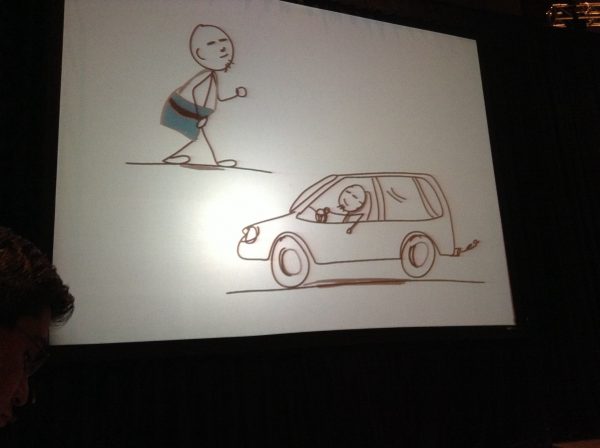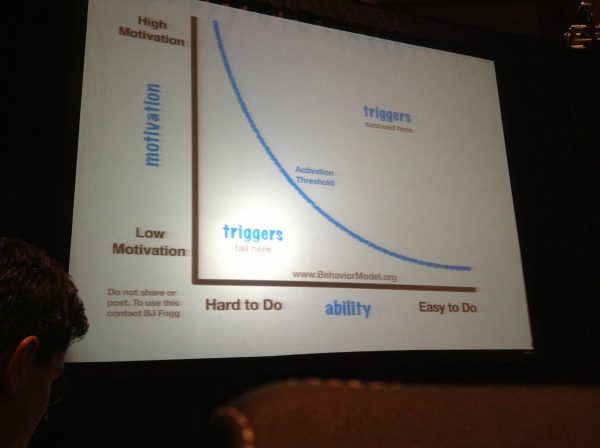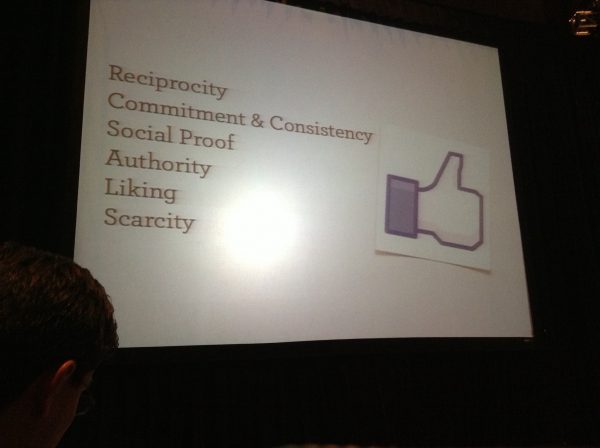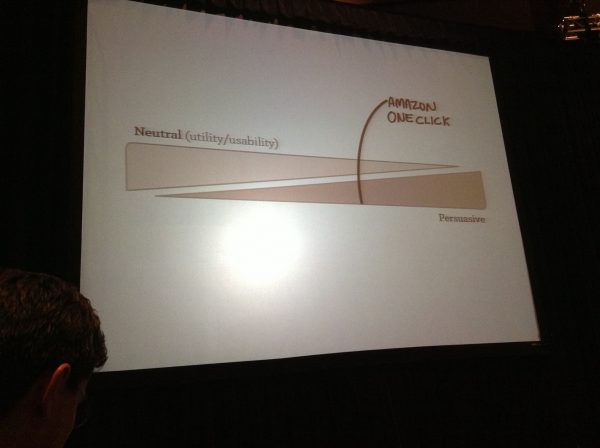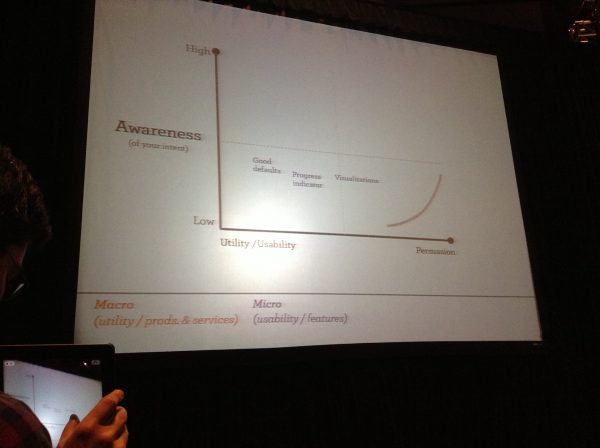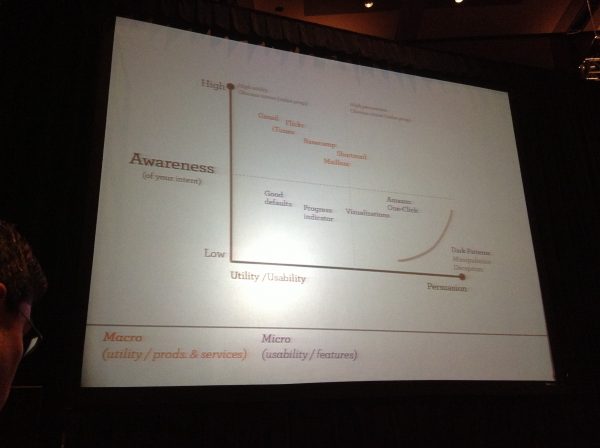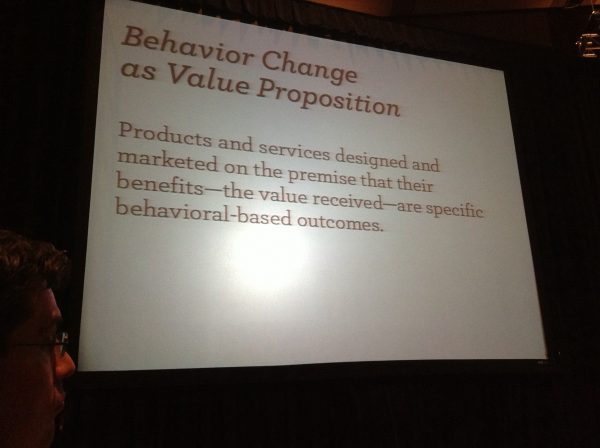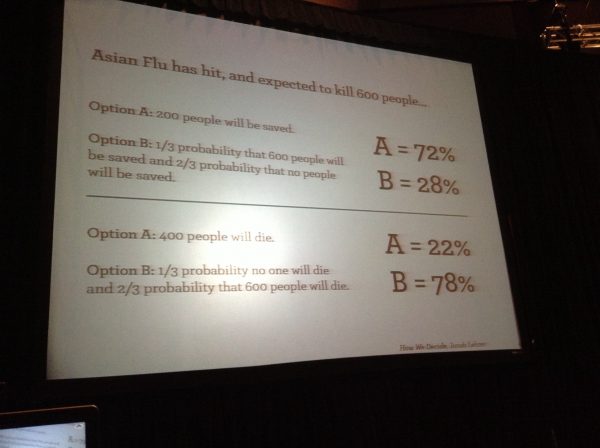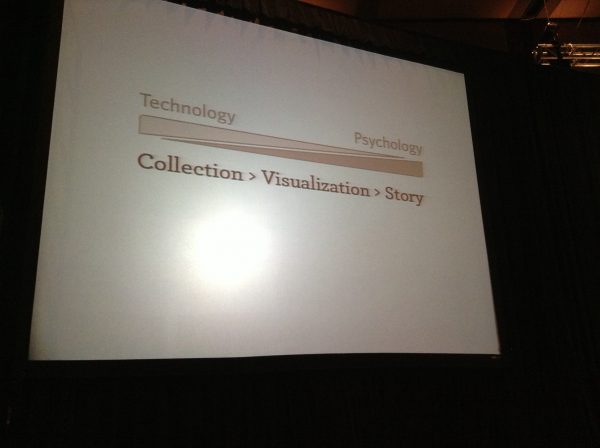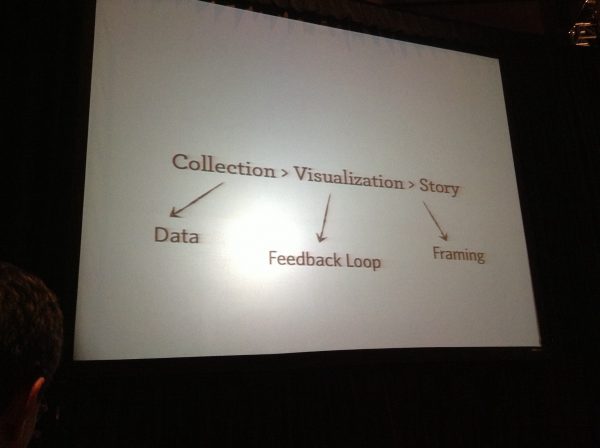At the end of the third day of SxSW, I sat in on a session about Behavior Change and how design can use that as a value proposition. Chris Risdon, of Adaptive Path, was the speaker, and it was great to sit in on this topic again and see how much it’s matured since the last time I got to see Chris present on it. The market today is becoming filled with products and services that are designed to not only track and monitor our behavior, but provide insight into how we might change that behavior for the better. Chris covered many of the concepts and principles behind this new breed of products during his talk.
Below are the notes I took during the session, please note it is mostly a stream of consciousness so please forgive any spelling or grammer mistakes.
Behavior Change as a value proposition #behaviordesign
Chris Risdon @chrisrisdon
- Moved from NYC to ATL to Austin
- After the move to ATL he gained weight, so did his family.
- He went from a walking town tap driving town
- When he thought about city’s and the culture they have, it was as simple as walking vs driving
- 20 minute walk in NYC was no problem, but in ATL places to check out we described by miles
- Over the course of a day or week, he didn’t want to think about which to focus on time or distance. He wanted whatwas convenient
- If you have half a box of chocolates, I can give you half the box now or a full box in a week. Most people will take the half box now. Value decreases the longer we have to wait for something.
- This concept shows up when we decide to get life insurance vs the newest device on the market. Long term vs short term
- Fog behavior model
- If you are in an airport in 2007 having a beer, and on the news you see the destruction of tsunami and you feel for the people being affected. You see an ad about donating to the Red Cross for this – to donate you have to get all the way home and remember to go to their site to donate. The ability to implementing the behavior of denoting was blocked.
- Now today the same situation can happen, donating is as simple as texting 90999 to donate $10 that shows up on your mobile bill. This easy method of acting allows the behavior to occur without barriers
- Opportune moments are everywhere now, when you buy something at the pet store the donation act is part of the checkout sequence
- 6 methods of influencing someone
- This is the tip of the iceberg for persuasion and influence – but how do this apply to behavior design and persuasive technology
- Tactics for influence is all around us – the nail polish that is bitter to prevent us from biting our nails
- Some of these are “dumb” feedback loops, it applies to everyone and is not focused on the individual behavior of the person
- Persuasion- is a scary word. But it’s not if you think of to as a spectrum
- Good defaults are a neutral concept that isn’t meant for persuasion, they are meant to aid in the user experience and streamline the interactions.
- Intent is the primary factor in the placement on the spectrum
- Good defaults where the intent is to persuade but for good reasons – organ donation. Most people want to do this, and if the default is opt out then more people do it because they don’t have to think about it.
- The ethics of this is tricky but important
- Awareness of intent is an important factor – how aware is the user that the design is trying to persuade
- Amazon one click – high persuasion but low awareness
- Good defaults – low awareness and low persuasion
- Manipulation is where the danger area is and you run into ethical issues. Manipulating with low awareness and high persuasion to benefit you not the user
- We are starting to have products and services that are more about me, a person, than the product itself
- Mint, Nike+, and run keeper – these have a higher level of persuasion and behavior management
- You should be focusing and watching those products that are high on both of those spectrums
- We are becoming more involved in “me”
- The user is looking for value that impacts their life directly and begins to improve our life.
- Data collection is required to do something like this and that data needs to be measured
- Recommendations and guidance s based on the data being collected both by the user and the network overall. E.g. You walked more than X today.
- Sensors & Data – Feedback – Profiling are the fuel of these new products.
- Basketball with a sensor that reports how well you are performing as a player.
- If it can have a sensor put on it, it will. This is just going to get more common and more ambiguous
- Our barriers to sharing our personal data is lowering as we find those value statements and see others improve their life
- Feedback – the more immediate the feedback loop is on the behavior the quicker the user can adjust
- Immediate feedback loops are becoming more common in products, but right now it isn’t very personable, it doesn’t help with decision making and guidance
- At the point of decision, we need to see what the results of our possible actions might be and why we should either avoid or perform some action
- Profiling – set up the responses and the triggers that are focused on how the person using the product would best respond
- How we decide by Jonah Lehrer
- Math is hard – and a lot of people don’t want to do the make to figure out what a lot of this data is trying to tell us. They want the decision, or the options, presented to them.
- Chicle architecture – managing the context which people make decisions
- Science Rockstars – trying to build a persuasion API which will help you define persuasion profiles around customers and improve the marketing that is done for them.
- Behavior Heuristics
- Dan Lockton provides these
- Perform the 5 whys to behaviors that are being exhibited or why they should conduct a behavior
- Create a list of heuristics or principles that guide how will use persuasion and behavior design to define the strategies that create the value propositions.
- Implicit vs prescriptive
- Implicit will hit a wide usage base but lower behavior change
- Prescriptive will have a smaller usage base but affect more change
- Every design decision influences the user, howev benevolent of the behavior.
Slides from the presentation
